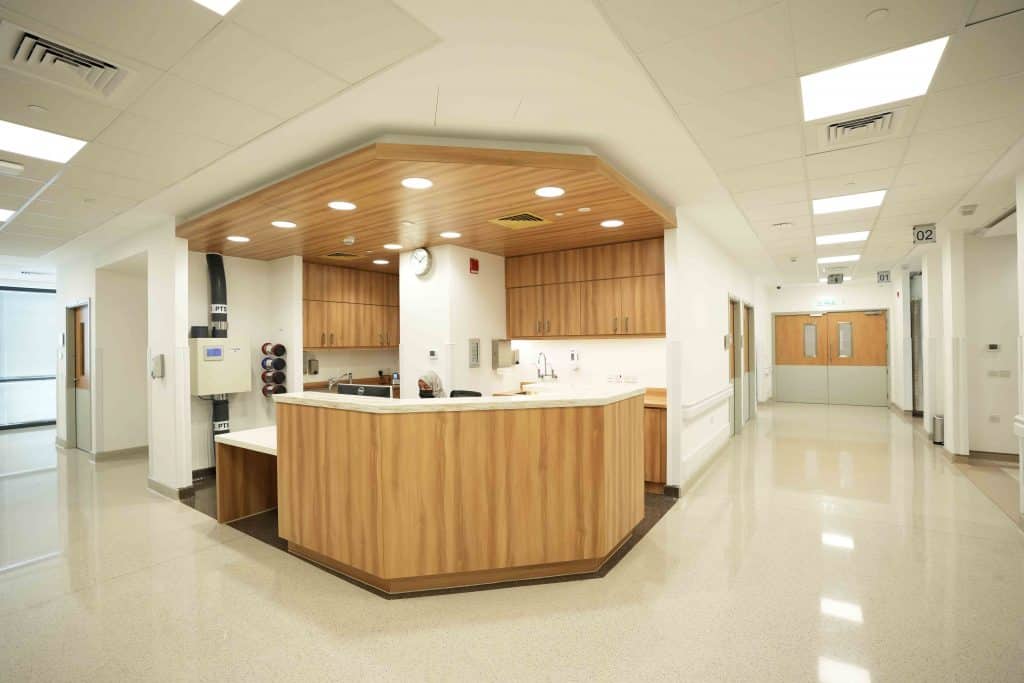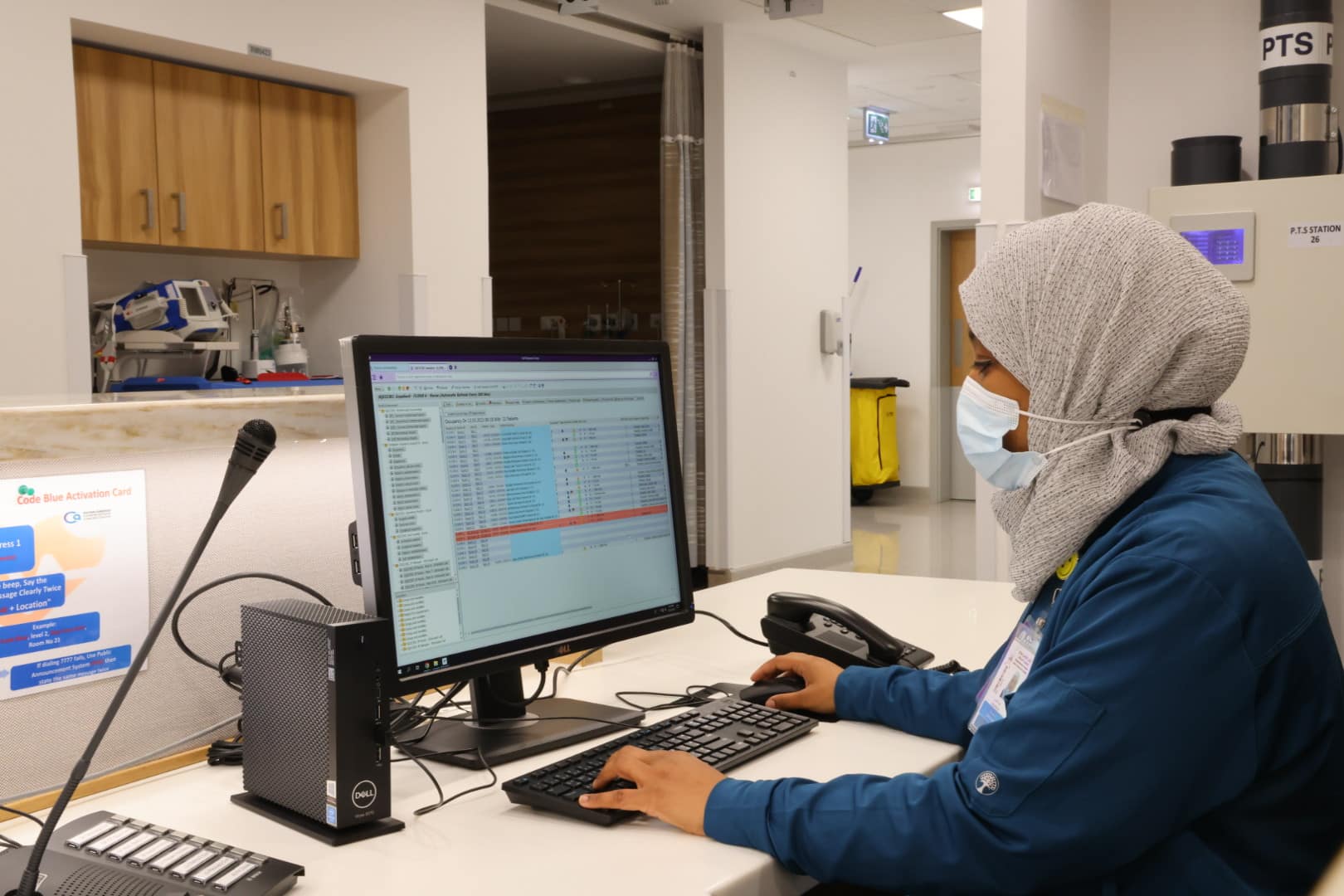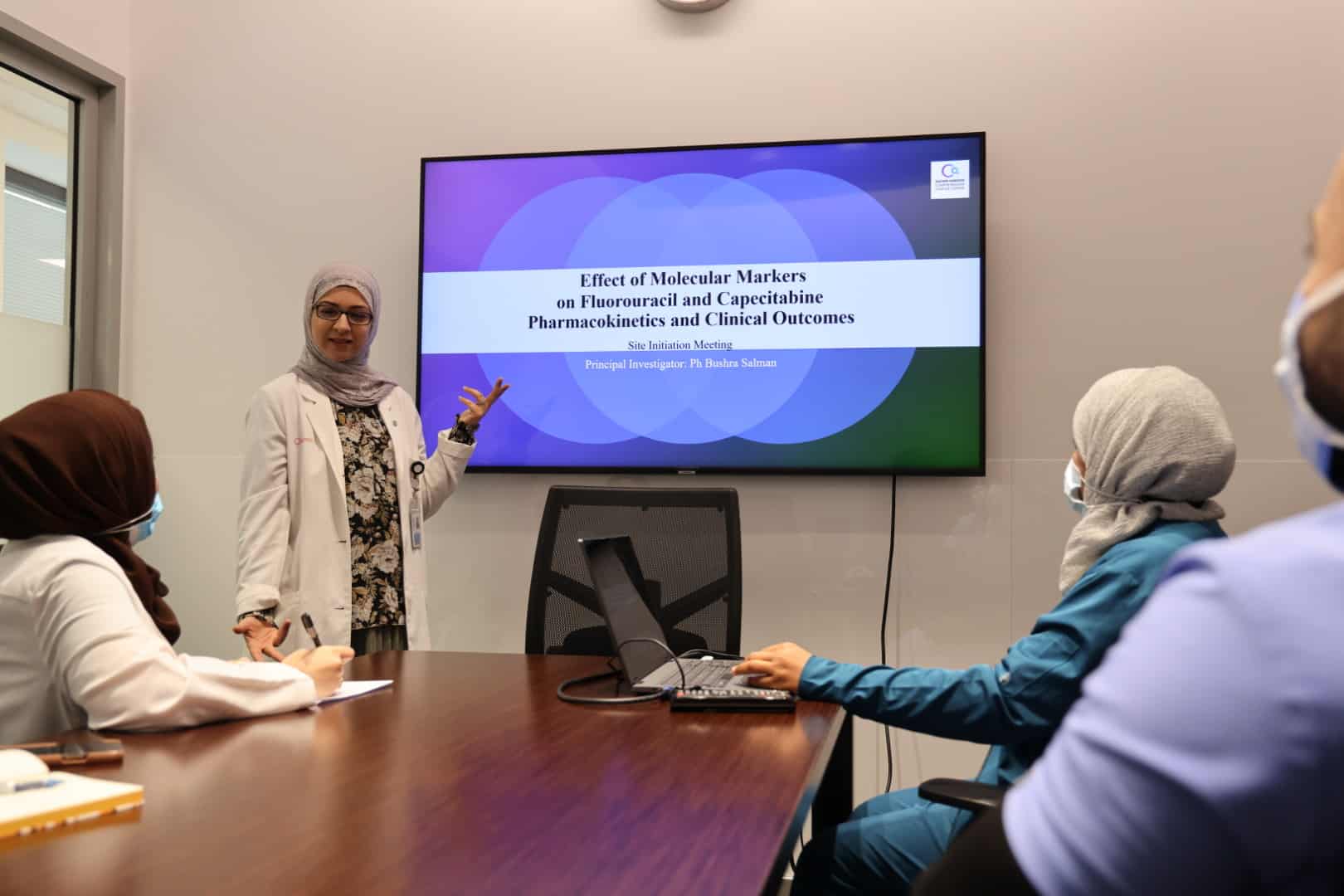How to initiate your own clinical trial? From heart to heart!
Bushra Salman, BCOP, MSc, MPharm – Head of Inpatient Pharmacy, SQCCCRC
One of the major privileges of clinicians working in world-class research centres is the opportunity to participate in clinical research. Most patients who come to such institutions are willing to take part in meaningful studies that could potentially revolutionise medical practice and enhance their own and other patients’ treatment outcomes.
There are two main types of clinical research: observational studies and clinical trials. In this article, I will focus on how to initiate your own clinical trial, covering the major steps involved, including generating ideas, enrolling participants, and executing the study. I will also share my own experience in starting a clinical trial in collaboration with my hospital’s clinical trial department.
First, a research question and hypothesis should be outlined before designing the trial. The generated question is most often observation-driven (for example, a high rate of toxicities observed with a new medication), but it may also be driven by new technology or the desire to evaluate the comparative effectiveness of two treatment strategies. As they say, “every beginning is difficult, but it gets easier from there on,” this step may require an extensive literature review to explore the novelty of the research question, feasibility, and expected challenges.
After generating a question, an appropriate study population should be identified. Since most of my research focuses on cancer patients, detailed parameters such as cancer type, stage, age group, etc., should be taken into consideration. Furthermore, for comparative clinical trials, a control group needs to be identified. This can consist of healthy volunteers or patients receiving an established ‘older’ treatment for comparison with the newly explored treatment.
A power calculation is essential to determine the appropriate sample size for a prospective comparative study. The expected differences between the study population and the control population should be assessed based on the outcome of interest. This requires an estimation based on a literature review and the knowledge and experience of the researchers involved. Having a statistician onboard from the beginning of the study is therefore very useful.
Most institutions require Institutional Review Board (IRB) approval before recruiting participants. Different IRBs might have slightly different requirements, but a clear description of the study’s background, rationale, objectives, methodology, sample size, anticipated patient risks, cost implications for the institution, and copies of informed consents are usually required for submission.
Additionally, the IRB needs to approve the study protocol. A research protocol differs from the proposal in that the proposal is written to persuade the IRB of the study’s value and necessity, providing a brief explanation of the research design and outcome measurement. In contrast, a protocol contains a very detailed plan for the study, considering real-life settings and situations. Protocol amendments and addendums may occur after the trial starts as real-life scenarios and challenges emerge.
My personal experience in setting up a clinical trial on the “effect of genetic polymorphisms on the metabolism, clearance, and toxicity of fluoropyrimidine-based chemotherapeutic agents” was remarkable. Not only did it take me three years to bring the study to the clinic and involve real patients, but after all the effort and difficulties in optimizing the protocol, there was a point when I thought that prospective trials were “a dream that would never come true!” However, the actual execution of the protocol went so smoothly, much better than any dream that could have come true!
I believe this success was largely due to the expertise of the senior clinical trial nurse who joined the study later on. I would strongly advise all clinicians thinking of starting a trial to have a clinical trial nurse from day one (and not to proceed without one!).




A very brief breakdown of the time points in my trial is as follows:
1. March 2020 – March 2021: idea generation, literature review, technology need awareness, proposal writing, protocol creation and consent development. Since the study involved multiple specialties (such as geneticists, pharmacokineticists and physicians), separate meetings were set with each expert to identify roles and required samples and tests. The research lab team needed to design a specialized genetic panel especially for this study, which was both comprehensive and cost-effective at the same time.
2. April 2021 – February 2022: multiple presentations and workshops on the trial for all the staff involved took place, in preparation for the equipment commissioning and other required facilities.
3. March 2022 – November 2022: a Master Trial Binder was developed by the clinical trial nurse for documentation and record keeping. Delegate nurses, pharmacists and physicians were asked to complete a “Good Clinical Practice” (GCP) certification, before being accepted as investigators or assistants. All investigators underwent a thorough training on their roles in the clinical trial, including the medical orderlies who will carry study samples to the designated labs. Additionally, all equipment and consumables were ordered and validated at this time. Moreover, a clinical trials clinic was created in the Hospital Information System (HIS), to allow for healthy volunteers as well as patients coming to the hospital solely for clinical trial participation to be booked, and have lab and other orders in the clinical trials clinic.
4. December 2022 – February 2023: campaigns for healthy volunteers were advertised as a control group for the study was needed. We had three campaigns and were able to enrol around 120 healthy volunteers. A “thank you” message was sent to all the volunteers involved as a sign of appreciation for their participation!
5. January 2023 – current: with the beginning of the new year, we had our first real patient enrolled in the study.
Embarking on the path of clinical research and conducting a clinical trial is undoubtedly a formidable undertaking. It involves meticulous planning, dedication, and perseverance in the face of unforeseen challenges. Overall, it has been a long and challenging journey; however, the experience itself has been extremely rewarding. Despite day-to-day challenges such as unexpected patient outcomes, staff shortages, suboptimal sampling times, and many other real-world hurdles that still occur, our team has maintained an open heart and mind. Despite the hurdles, the potential to contribute to advancements in medical science and improve patient care is a powerful motivation. As we continue our journey in the world of clinical research, let us remember that every trial, every discovery, and every patient we help brings us closer to a brighter future in healthcare. With determination and an open heart and mind, we can make a lasting impact on the world of medicine and the lives of those we aim to serve.





